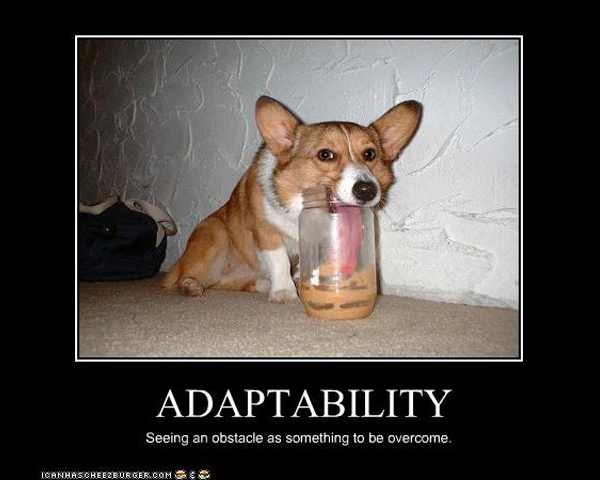Hey @Marriott,
Congratulations – you’re about to become the world’s largest hotel company. But did you know that 83% of mergers and acquisitions have failed to boost shareholder returns – according to a KPMG study?
Recently United Continental Holding’s CEO – a month before he suffered a heart attack – apologized for the handling of the merger between United and Continental by putting off important issues – like updating employee agreements set by the airlines’ predecessors and transparently communicating to employees.
This 5-year delay lead to a disappointing shareholder return – mainly because the employees weren’t happy. And when the employees aren’t happy, neither are the customers. I mean, really, how many pissed off employees do you know that excel at customer service?
Marriott, you’re in the hospitality business – you know how important the people who work in your hotels are to your overall success. I mean, I’ve even personally heard Bill Marriott Jr. speak on the importance of great people and great service.
So, as I like you Marriott, here are things you can learn from United’s mistakes. 7-key factors that will help you keep your people happy and boost shareholder returns:
Prepare for change.
Having a detailed change management plan in place is key. Change is hard. Everyone deals with it differently. Some people avoid it. Some take baby steps. Some confront it. Some dive in head first and change everything. A merger or acquisition requires new behaviors and ways of doing things. People adapt to change at a different pace. People internalize change in different ways. Change is emotional. Getting your people to commit to change is not a one size fits all off the shelf solution. Don’t make it one!
Communication is king.
Timely communication explaining the process and impacts, how it affects the teams of people and customers, and communicating what everyone needs to do to succeed — all while keeping open dialogues in all directions — is imperative to a successful transition. If you fail to do this – people talk, make assumptions, engagement declines, productivity declines, and service suffers greatly. You end up with confused and unhappy employees and confused and unhappy customers.
The merging of 2 cultures.
People who know Marriott know how important the culture is to the organization. But when 2 ways of doing things are merged, you’re going to bump into roadblocks. Organizational cultures are like snowflakes, no two are the same. It’s not about right and wrong or what is and what was. It’s about merging the 2 cultures – not just the 2 brands – and finding what works best moving forward. From both an employee and customer perspective. Ask for feedback and act on feedback. Bringing 2 cultures together is a journey. A journey your people, and even customers, need to be involved in from day one.
Processes, processes, processes.
Processes, well from a customer perspective, these are always an area for critique and improvement in most organizations. You need to conduct a detailed process inventory and impact analysis. Identify which processes you need in place, when, and where. Look at which may be redundant and overlap between Marriott and Starwood. Look at which work well, which need improvement, and which make sense to be integrated. Perhaps one entity has a better process than the other? Perhaps both need to be streamlined and refined? Maybe one current technology system or rewards program (Starwood has a leg up here) will meet your needs, or, perhaps you may need to create or build a new solution. Either way – assess all processes and impacts that can hinder performance and the customer experience and make changes where needed.
Train your people on the new processes.
This is a huge pet peeve as a customer. And one often highlighted during a merger or acquisition. Your people need training on the new processes and technology. During a merger and acquisition, people often have fear of incompetence. They assume their world is being turned upside down. They are afraid their job may become obsolete or they may not have the skills to perform successfully in the new environment. Your people need to be told what the new processes are, why they need to change, and how changes will help make their job easier – and how it will help to better service the customer.
Leaders should lead, not manage.
Take responsibility. Be accountable. I can’t speak for Starwood’s leaders, but, this is something I’ve experienced Marriott leaders and employees try to do very well. There are going to be issues and problems. And that’s OK. Leaders generate enthusiasm, demonstrate how things should be done in the new world, and fix breakdowns. They develop the path for everyone to follow to ensure the organization moves forward – together. For more on this, see our checklist: How to be a Great Leader!
Evaluate and course correct.
Learn and adapt. High-performing organizations remain successful by creating clear expectations with regard to the desired performance, measuring results, and evaluating activities or projects. This is especially important during a merger or acquisition. Continuous improvement and innovation is imperative to success, and can only occur through evaluation and a culture of continuous learning. Have a distinctive and concise strategy with supporting processes that are continuously measured and evaluated in support of successfully achieving goals. You may not get it right the first time. Don’t fear failure. Course corrections are ok. Agility is a good thing. It means you’re trying new things and learning.
Moral of the story, Marriott – there is a difference between being the largest hotel company and the best hotel company. The ambition and desire to be both are commendable. You are merging two different employee and customer bases. To be successful – be prepared for change, communicate regularly, carefully merge the 2 cultures, evaluate your processes, lead by example, and evaluate and course correct. Or, though financials look strong thus far, you may eventually need to be ready to explain to shareholders why they haven’t received their return and explain to customers why they should stay loyal.
Oh, but feel free to keep what the Westin offers per the gym clothes and $5 environmental sustainability bill credit per day for declining housekeeping in my room!
About Scott Span, MSOD: is CEO & Lead Consultant of Tolero Solutions – a Leadership Effectiveness and Change Strategy firm. He helps clients in achieving success through people, creating organizations that are more responsive, productive and profitable. Organizations where people enjoy working and customers enjoy doing business.
Email | Website | LinkedIn | Twitter | Blog | Facebook
________________________________________________________________________________
*All Rights Reserved. Reproduction, publication, and all other use of any and all of this content is prohibited without authorized consent of Tolero Solutions and the author.


